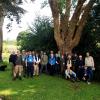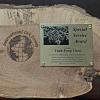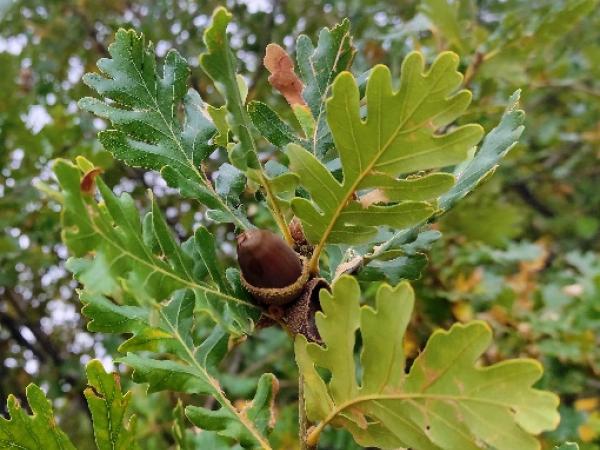Editor's Picks
Plant Focus
 |
| Dirk Giseburt |
Where are you from?
I was born in Seattle, Washington in 1956 and grew up in a semirural suburb north of town.
What is your professional background?
I was a history major at Princeton University and then received a J.D. from Harvard Law School in 1983. I spent a year in Tokyo as a foreign legal consultant and then began work in 1984 at the Seattle law firm now known as Davis Wright Tremaine. I still work there today (2018).
But I was concerned at one point that my education as a person seemed to be diminishing and, in the early ‘90s, I studied botany as a post-baccalaureate undergraduate at the University of Washington. It might have become a career turning point, but when our daughter was born, my wife Marilyn and I decided to stabilize the family resources, and I returned to full-time law practice. Since then, I have been playing in botany and working in law and have not been bored.
How did your interest in oaks start?
There are at least two points of beginning, but interrelated. First, when we bought our current house near Seattle in 1996, I began rethinking the garden, partly in consultation with Art Kruckeberg’s book, Gardening with Native Plants of the Pacific Northwest. I was smitten with photos of Quercus sadleriana and Q. vacciniifolia, nearly natives from southern Oregon. I picked up several individuals from a native-plants nursery run by Art Kruckeberg’s wife Mareen. When the Sadler oaks began to produce acorns in just a few years, I popped some into pots and discovered the thrill of propagation! These oaks in my yard have been my best teachers.
Second, after those plants had grown a few years, I went back to the Kruckeberg garden and nursery to see what else they had. Mareen had died recently by then, but she had potted up a very fetching seedling labeled only Quercus sp., then with evergreen leaves with a few simple lobes of a pretty angle. I bought it and embarked on a quest to answer the very pressing problem, “What is it?” This led me to read the oak monographs I could find, pore over the Oaks of the World site, jump into the old Quercus Trees group on Yahoo! and begin exchanging seeds, do a little oak tourism when I traveled for bar conferences, start reading scientific papers again, etc. Ultimately, though it hardly matters, I came to surmise that this plant was probably a garden hybrid, Q. parvula × rubra, which Mareen had potted up from a volunteer seedling in the Kruckeberg Botanic Garden (they have a few individuals of Q. parvula).
 |
| Quercus sadleriana (×pontica?), with pollen catkins sometimes exceeding 30 cm, in Dirk's garden |
How did you come to join IOS?
I do not remember. I joined shortly before the Puebla Conference in 2009 and bought a nearly complete set of International Oaks, but was unable to attend any Conferences until the 2015 Conference at The Morton Arboretum. I was very fortunate to get to know Allan Taylor through the Yahoo! group, and he encouraged me to write a couple of short pieces for Oak News & Notes in around 2011 – that was the beginning of my actual “involvement” in IOS.
Which are your favorite oaks?
In the garden, for me, Q. vacciniifolia is the dearest plant – deep, lush colors, tidy habit, exquisitely modest leaves. My best teacher, though, and a much bolder specimen, is one of the “Q. sadleriana” I bought in 1998, and it has matured in ways suggesting it is really a hybrid with Q. pontica from the plants in the Kruckeberg Botanic Garden. Very big plant now, about seven meters high and eight across. The photo is from spring 2016. Some seeds from this plant have been shared at the 2012 and 2018 IOS Conferences.
An oak anecdote you would like to share?
My first adventure in oak tourism was in 2005. Needing to escape from a bar meeting in San Diego, I rented a car and set out for Palomar Mountain State Park – just a happenstance choice from the sites I could find on the Web for a little oak exploration. What a marvelous community of Q. chrysolepis, Q. agrifolia, Q. kelloggii, and Q. wislizeni! I have returned for a visit many times and am always learning something new.















